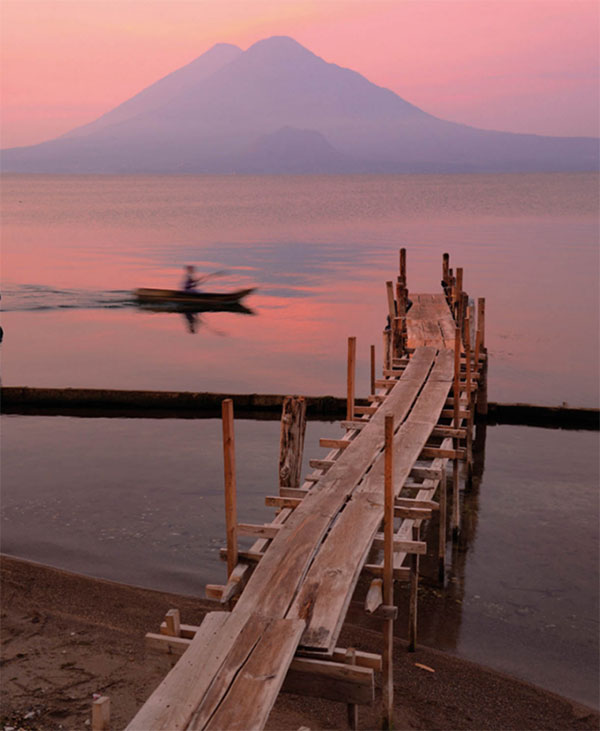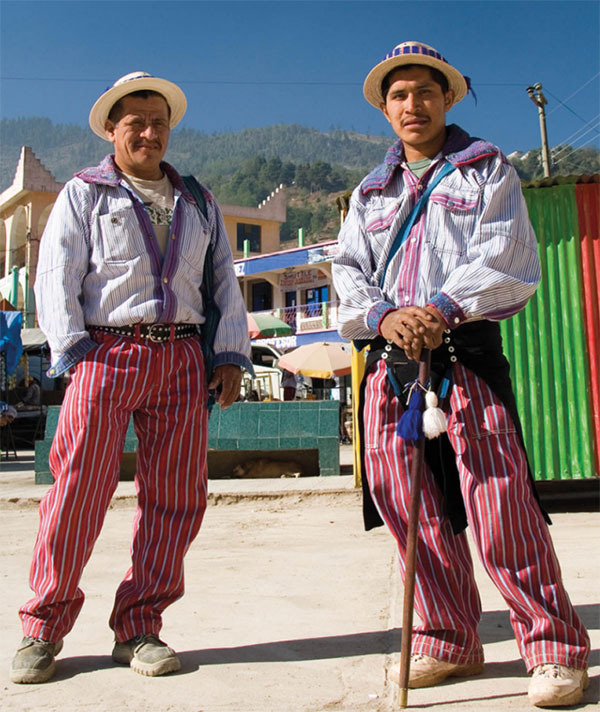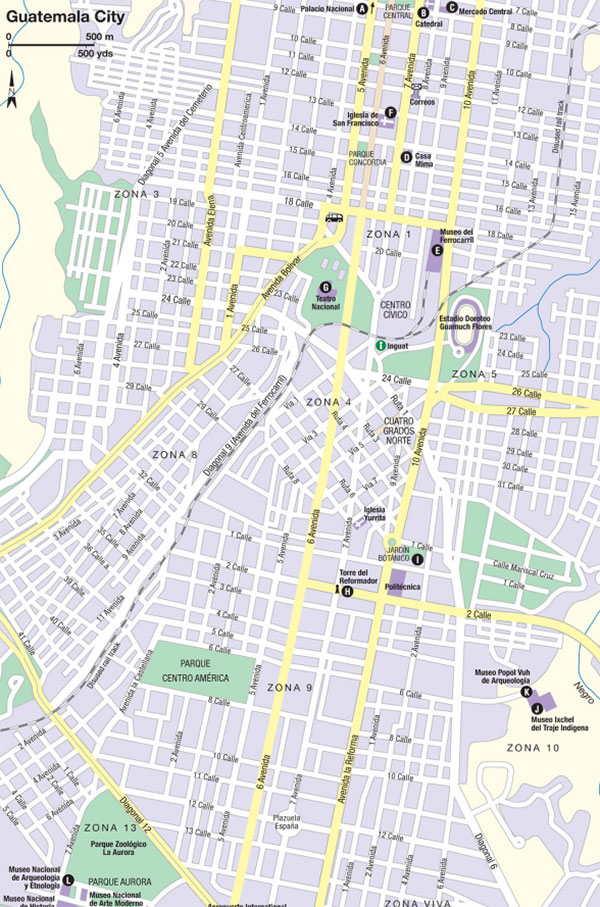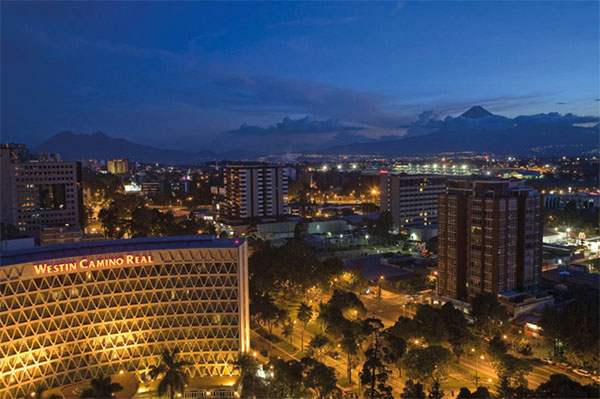GUATEMALA
From ancient Maya pyramids and beautifully-preserved colonial architecture to mighty mountains and sparkling lakes, Guatemala is rich in culture and offers everything for a memorable adventure.
Main Attractions
Guatemala City
Antigua
Lago de Atitlán
Panajachel
Chichicastenango
Santa Cruz del Quiché
Quetzaltenango
Cobán
The Petén and Tikal
Guatemala is both the ancient and modern heart of the Maya world. More than 6 million Maya live in Guatemala, forming around 50 percent of the country’s population, and it is their dynamic, unique cultural tradition that is the nation’s most distinctive feature. Guatemala is one of the least Latin of all Latin American countries – a land where sophisticated pre-Conquest traditions, language, religion, culture, and dress still endure over 500 years after the Spanish first arrived on the continent.

Lago de Atitlán at Panajachel, with Volcan Toliman in the background.
AWL Images
For such a small country, Guatemala combines a multiplicity of landscapes. Vast tropical forests cover the Petén, a sparsely populated northern region rich in wildlife and studded with the ruins of dozens of ancient Maya cities. The east of the country has an extreme juxtaposition of geophysical systems: cloud forests, gorge systems, and a humid Caribbean coastline. The southern swathe of the nation is mountainous and crowned by volcanoes. In the beautiful highlands, the rural population is mostly Indigenous, and life revolves around traditions that have evolved since the Conquest. Though most Maya are nominally either Catholic or belong to Evangelical churches, ancient Maya spiritual beliefs are integrated into highland worship and fiesta celebrations. Maize remains a key crop – it also retains a sacred status, since in Maya mythology man was created from corn.
Guatemala has been the center of power in Central America since Preclassic Maya times, when the great trading cities of the region, El Mirador and Kaminaljuyú, first emerged. Tikal later dominated the Classic period. When the Spanish conquistadors arrived from Mexico in 1523 they established their first capital in Guatemala before moving down through the rest of the isthmus. The colonial capital of Antigua was one of the glorious cities of the Americas, ranking alongside Mexico City and Lima as one of the greatest in the continent. Today, Guatemala is the most populous of the seven Central American nations, with a population of around 17 million.

Traditionally dressed Guatemalans.
Corrie Wingate/Apa Publications

Guatemala City
A vortex of humanity and belching traffic, Guatemala City 1 [map] , colloquially known as ‘Guate,’ is in many ways everything that the rest of the country is not. The streets of the central zone are crumbling, but increasingly, parts of the historic center are being revitalized. In the more upscale suburbs in the south of the city the atmosphere is very different, but even here the bougainvillea flowers draped over residential homes are intertwined with razor wire, put up to deter intruders. Nevertheless, if you want to get a real flavor of the complexities (and inequalities) of the country, then a day or two in ‘Guate’ is essential. In fact, for many travelers, Guate’s grit and noise has a special appeal, particularly as a uniquely urban counterpoint to the country’s natural and cultural riches.
SAFETY
Guatemala City can present security concerns for travelers, and you should always take basic precautions to minimize the risk of being robbed: keep your valuables (including smartphones and jewelery) out of sight, especially when walking around the city. Though Zona 1 looks run down, it is considered safe to explore during daylight hours and in the early evening. The Zona Viva (in Zona 10) is a spirited upscale area, and the great number of cafés and restaurants here make it fine to explore on foot, except perhaps very late at night. The Transmetro bus network is a safe, fast way to get around the city, but after 8pm or so it is advisable to stick to taxis – Amarillo (tel: 2470 1515; www.amarilloexpress.com) is a reliable company with metered cabs.
Stroll the Parque Central – the emotional and geographic heart of the city – and the store-lined La Sexta (6a avenida, or 6th Avenue) in the historic center, and then mingle with the Guatemalan elite in the Zona Viva, a cosmopolitan mix of restaurants, bars, and clubs. Guatemala City also has a variety of top-notch museums. And the climate, as the city is at 1,500 meters (4,900ft), is also benign, and never gets oppressively hot.
Getting around is fairly straightforward because almost everything of interest is in five zones: Zona 1 in the north of the city, Zona 4 in the center, and Zonas 9, 10, and 13 in the south. In common with most Latin American capitals, Guatemala City is organized according to the Spanish grid system: all calles run east to west and all avenidas north to south.
Zona 1 and Parque Central
The Parque Central is considered both the heart of the city and the nation; indeed, all distances are measured from here. It is surrounded by some of the most historic and prestigious edifices in the country. Presiding over the northern side is the monumental bulk of the Palacio Nacional A [map] (Mon–Fri 9am–4pm), designed by the architect Rafael Pérez de León during the Ubico dictatorship between 1939 and 1943. The Palacio contained the presidential offices until 1998; if you visit you can take a guided tour (in English and Spanish). The sober grey-green stone exterior belies an eclectically decorative interior of Moorish and neoclassical influences. Giant stairwell murals by Alfredo Gálvez Suárez depict an idealized history of Guatemala. Don’t miss the two attractive Mudéjar (Moorish) inner courtyards planted with palm trees.

Looking out over Zona 10, or ‘Zona Viva,’ in Guatemala City.
Diego Lezama/imageBROKER/REX/ Shutterstock